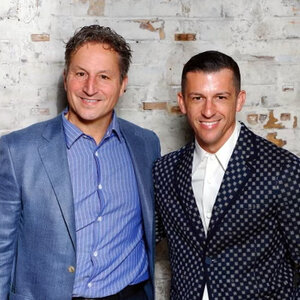Angels in the American Theater: Patron, Patronage, and Philanthropy
It's true what they say: There's no business like show business. It's also true that there would be no show business at all were it not for the backers, financiers, visionaries, and acolytes who have made the performing arts their special province. Were it not for these champions of American theater, the lights might never have come up on some of this past century's most enduring plays and musicals. What's more, the creation and expansion of professional regional theaters beyond Broadway might never have happened at all.
The lives and legacies of many of these individuals are recounted in Angels in the American Theater: Patron, Patronage, and Philanthropy, the latest volume in the Theater in the Americas series. Edited by Robert A. Schanke, the volume is an excellent and readable introduction to the history of arts patronage, and includes richly textured biographies of early philanthropists such as Otto Kahn and the Lewisohn sisters, as well as an up-to-the-minute look at how contemporary media moguls such as David Geffen, philanthropies like the Ford Foundation, and companies such as Disney are transforming America's performing arts landscape.
Schanke opens the volume with a rumination on one of the great ironies of American egalitarianism, namely that while artistic expression is central to the values system we generally describe as "American," the arts themselves are relegated to the periphery of our national priorities when it comes to taxation and financing. In the early days of the formation of our national culture, he notes, the creation and, more importantly, patronage of the arts was seen as the job of an aristocracy, which America lacked. That all changed with the enormous wealth created during the last quarter of the 19th century, as the freshly-minted nouveaux riches of the Gilded Age began to vie with each other for public acclaim and social status.
The essays that follow are wide-ranging and explore different aspects of both the history of the performing arts in the United States as well as how the individuals and institutions involved in that evolution saw their roles in building and sustaining the arts. If there is a theme to the collection it is that arts funding in general and support for the performing arts specifically has gone from being an indulgence of the wealthy to the institutionalized practice of an industry built around the creation and distribution of non- and for-profit theater. For some, like Alice and Irene Lewisohn, who created and funded New York's Neighborhood Playhouse (one of America's first professional resident theaters), funding the arts was a means for satisfying their own artistic interests; for Lucille Lortel it was to build a viable Off-Broadway theater industry; for W. McNeil Lowry at the Ford Foundation it was to secure a place for professional regional theater throughout the United States; and for the Rockefeller Foundation (and its Creative Capital MAP Fund) it was to support original new work that goes beyond the boundaries of the existing repertoire in America.
Conspicuously absent from this otherwise meaty volume is any sustained look at the role of government in funding the performing arts — so much so, in fact, that the reader might think that no such funding exists. Schanke himself gives little credit to government for promoting the arts, and suggests that we should expect more of the same in the present climate. (In a back-handed way, he does credit the federal government for having created the IRS loophole that allows individuals and institutions to avoid taxes on income used for promotion of the arts, and suggest that without it, modern arts philanthropy would not exist.) But, of course, public patronage of the arts in the United States is quite substantial and has its own history (with many highs and lows). But for Schanke, enough has already been written on the National Endowment for the Arts, and while there are surely "angels" in the public sector, at all levels, we don't get to meet them here.
The two most telling essays in this volume come at the end, serving perhaps as a harbinger of things to come. With the introduction of Disney and Clear Channel into the world of professional theater, the prospects for the performing arts seem to have been turned on their head. In an industry where ticket sales seldom cover even half the cost of production, the bottom-line business ethic of these two media-entertainment juggernauts may spell trouble for less lucrative, yet artistically valuable work. It may also be that in their own way, Disney and Clear Channel are expanding America's performing arts landscape even as, intentionally or otherwise, they contribute to the homogenization of that landscape. In her essay, Modern Medicis: Disney on Broadway, Kathy Privatt concludes that the face of arts patronage has changed for good — and it is the face of the modern corporation. But maybe that shouldn't come as a surprise. As Kander and Ebb put it in Cabaret, it's money that makes the world go around.







